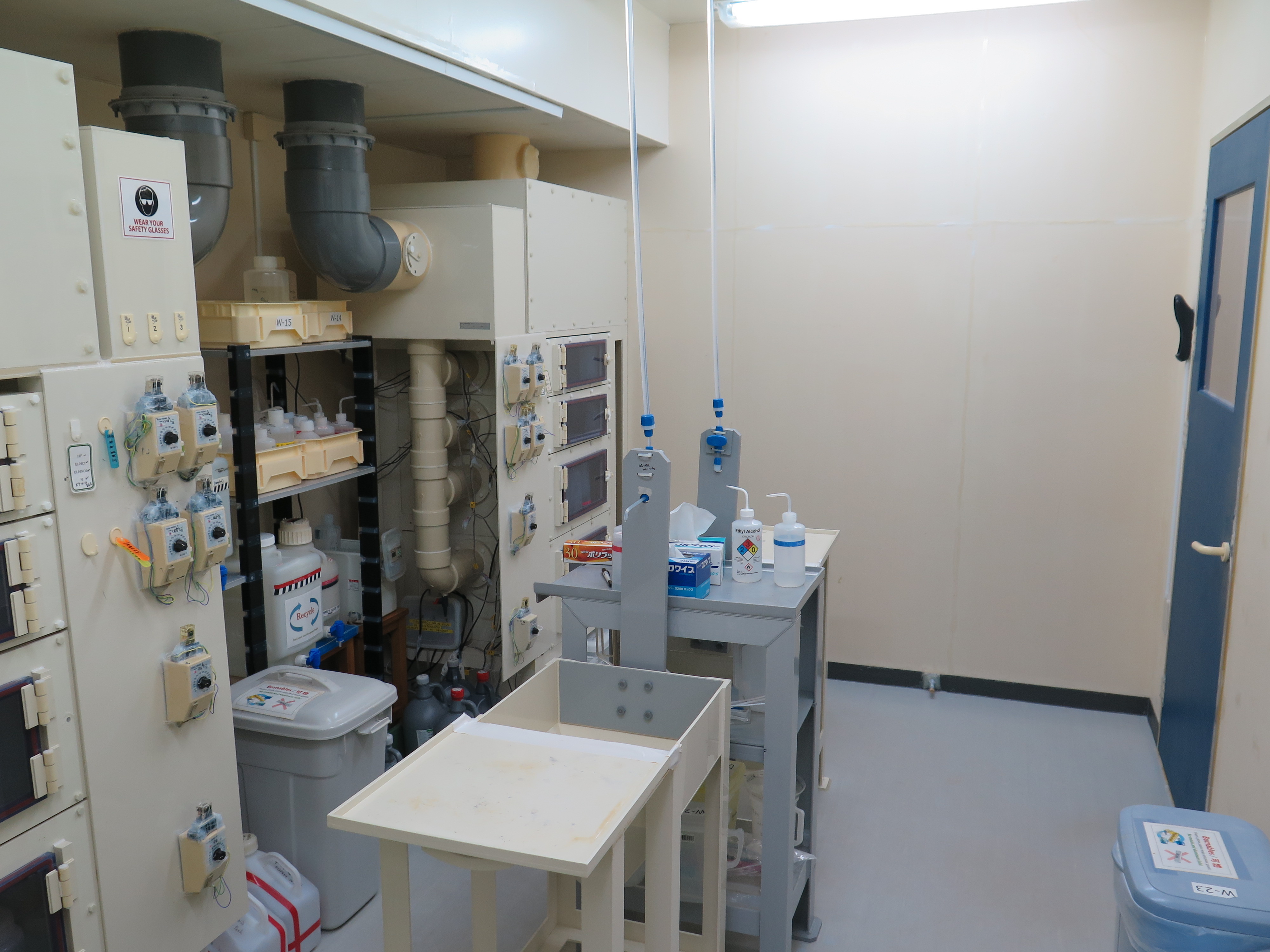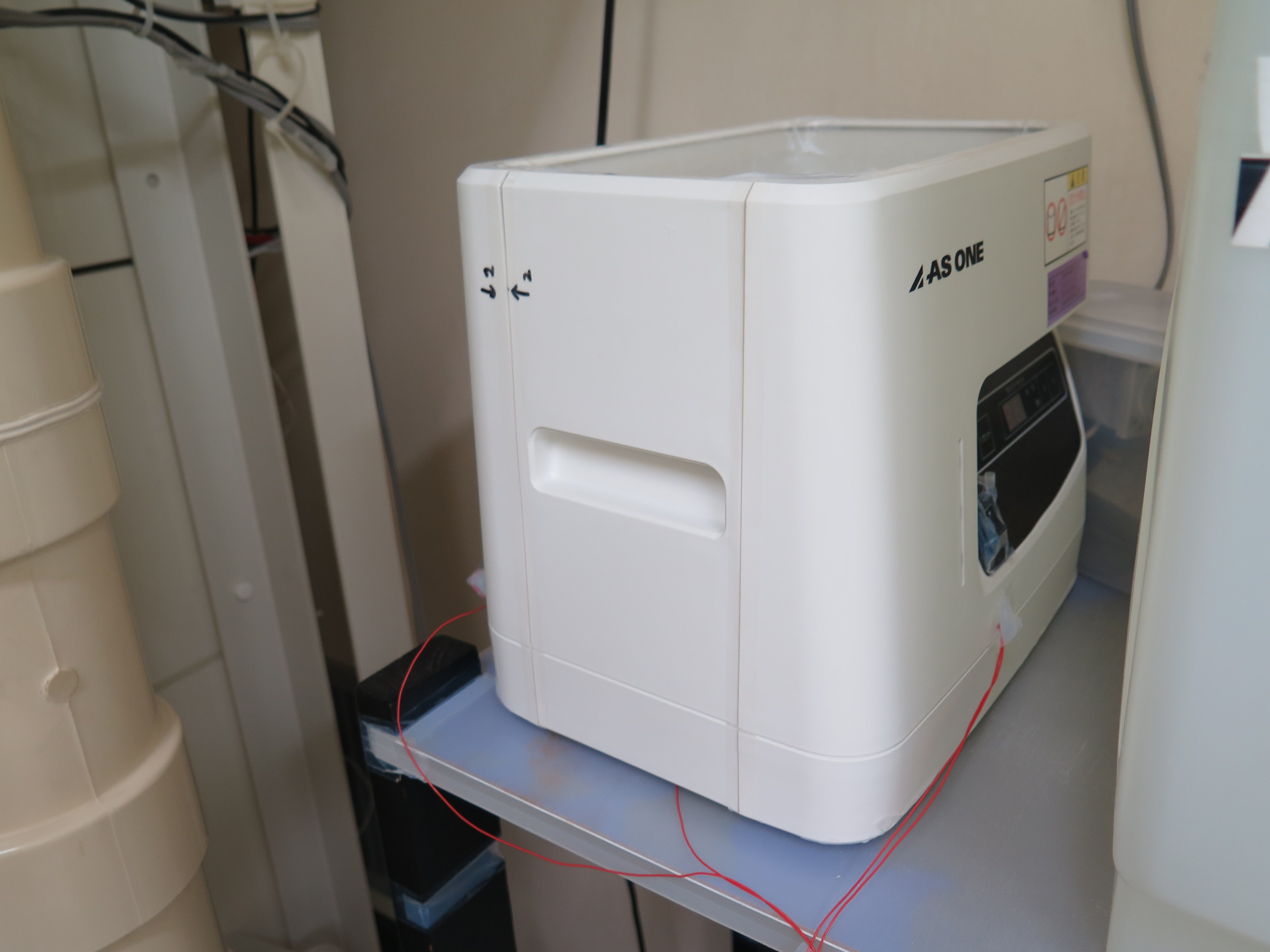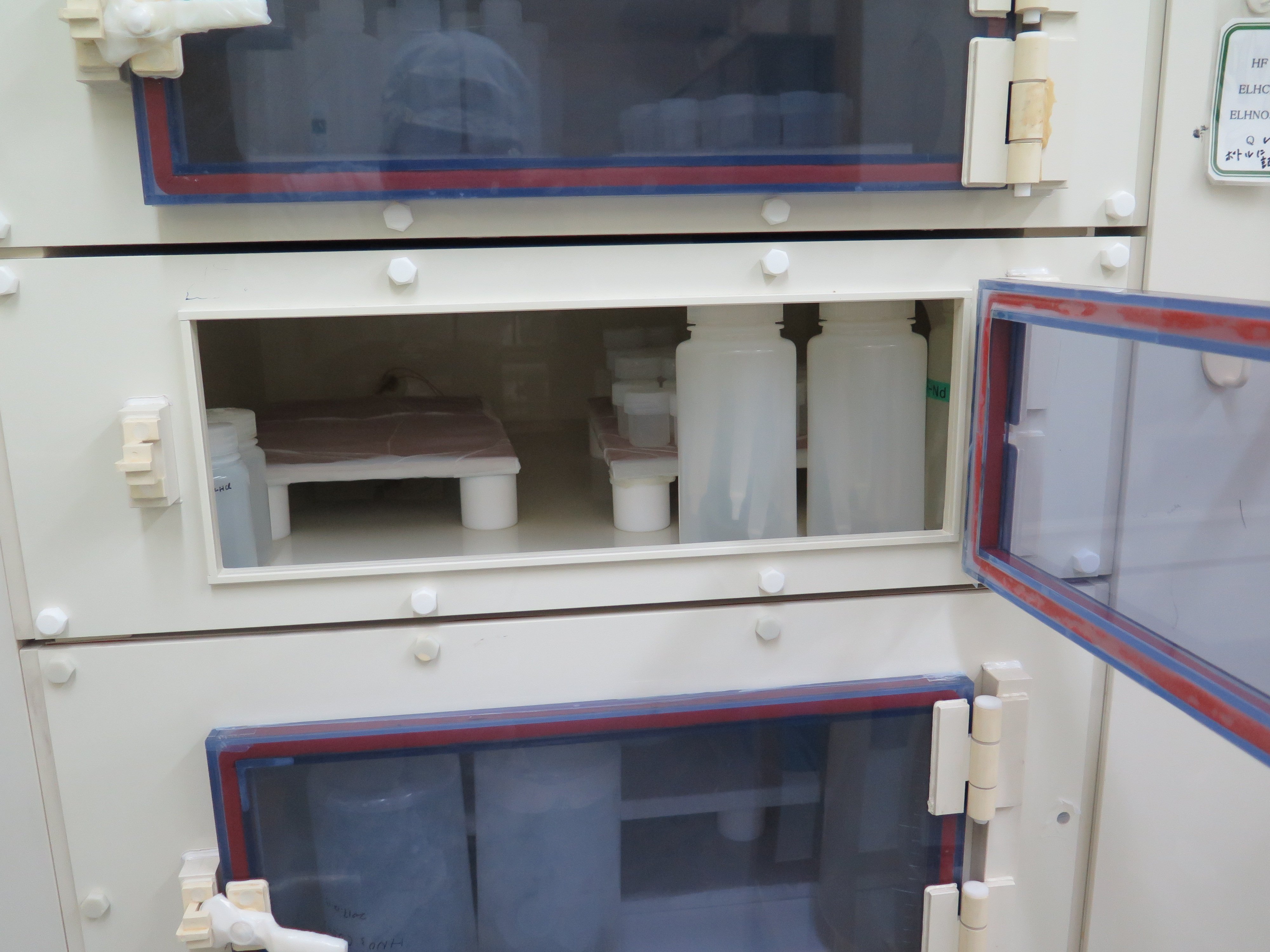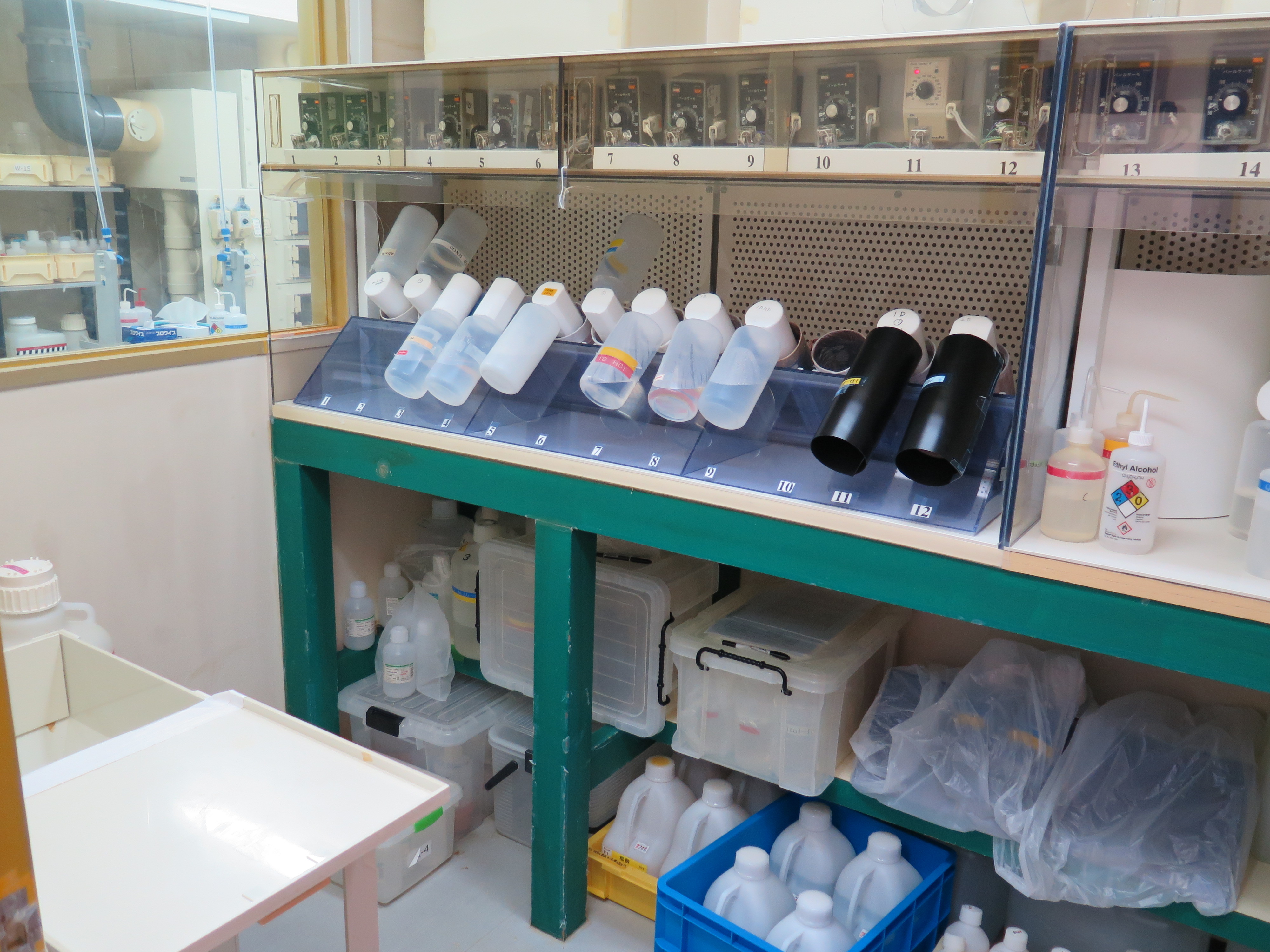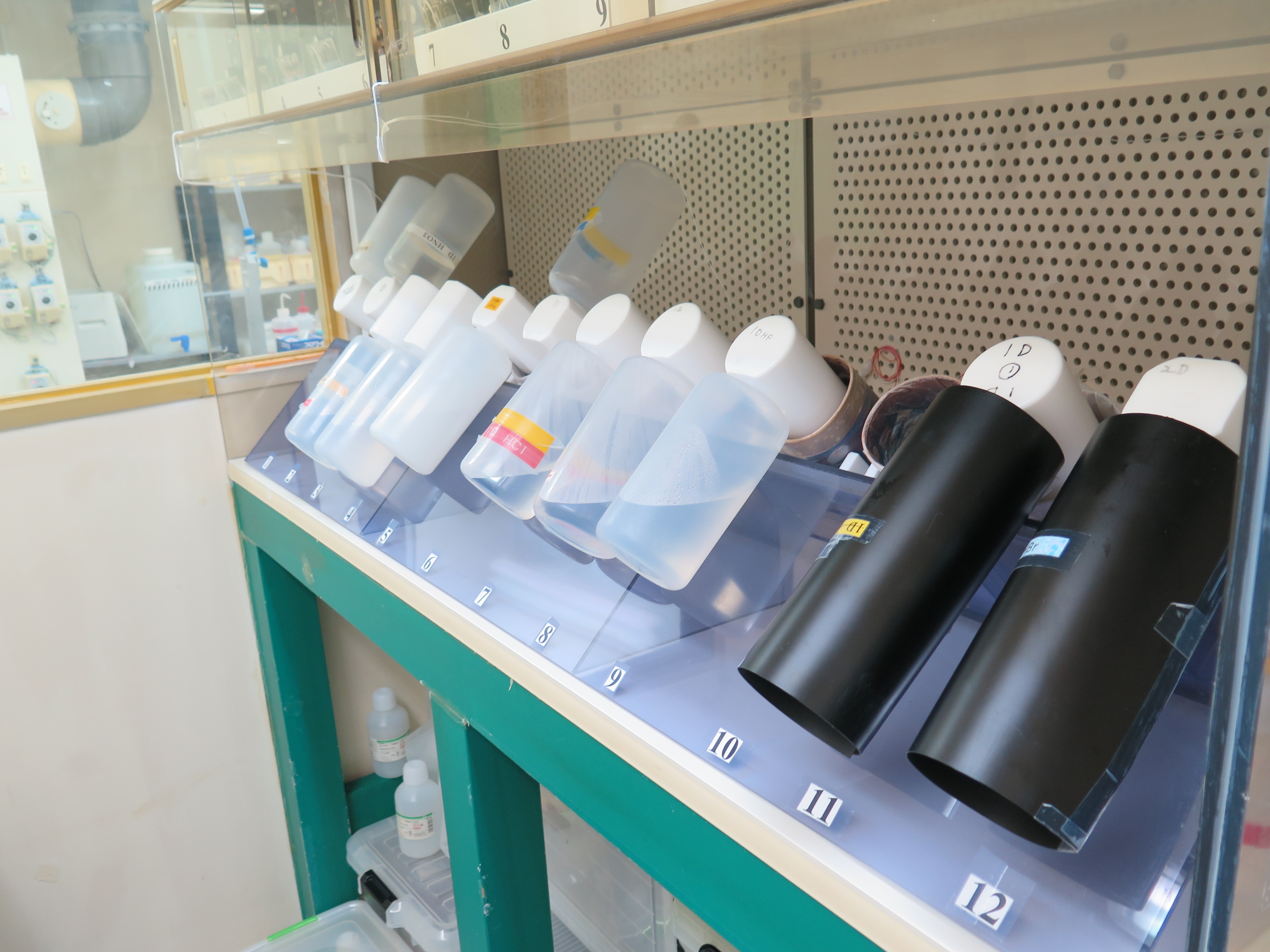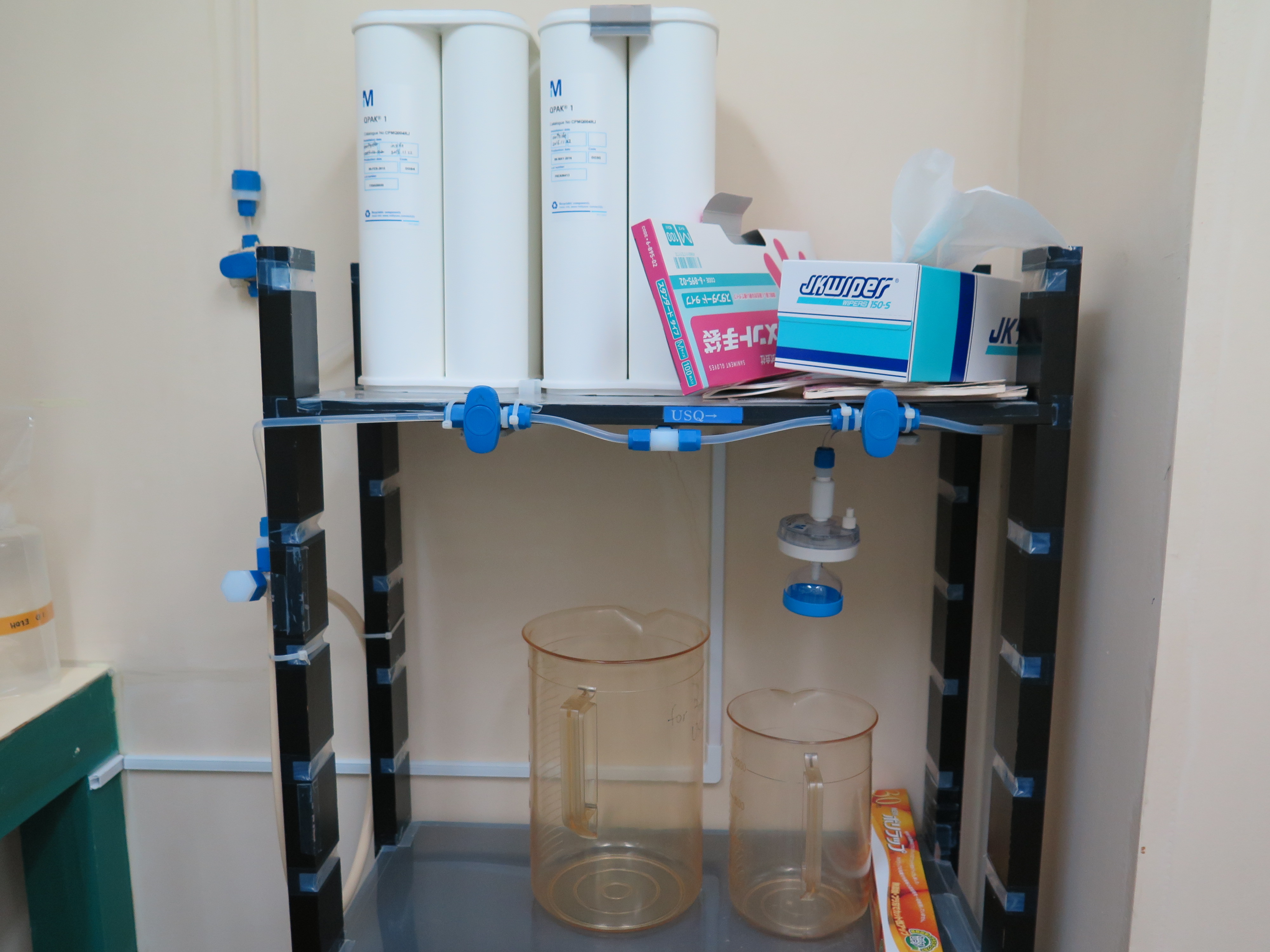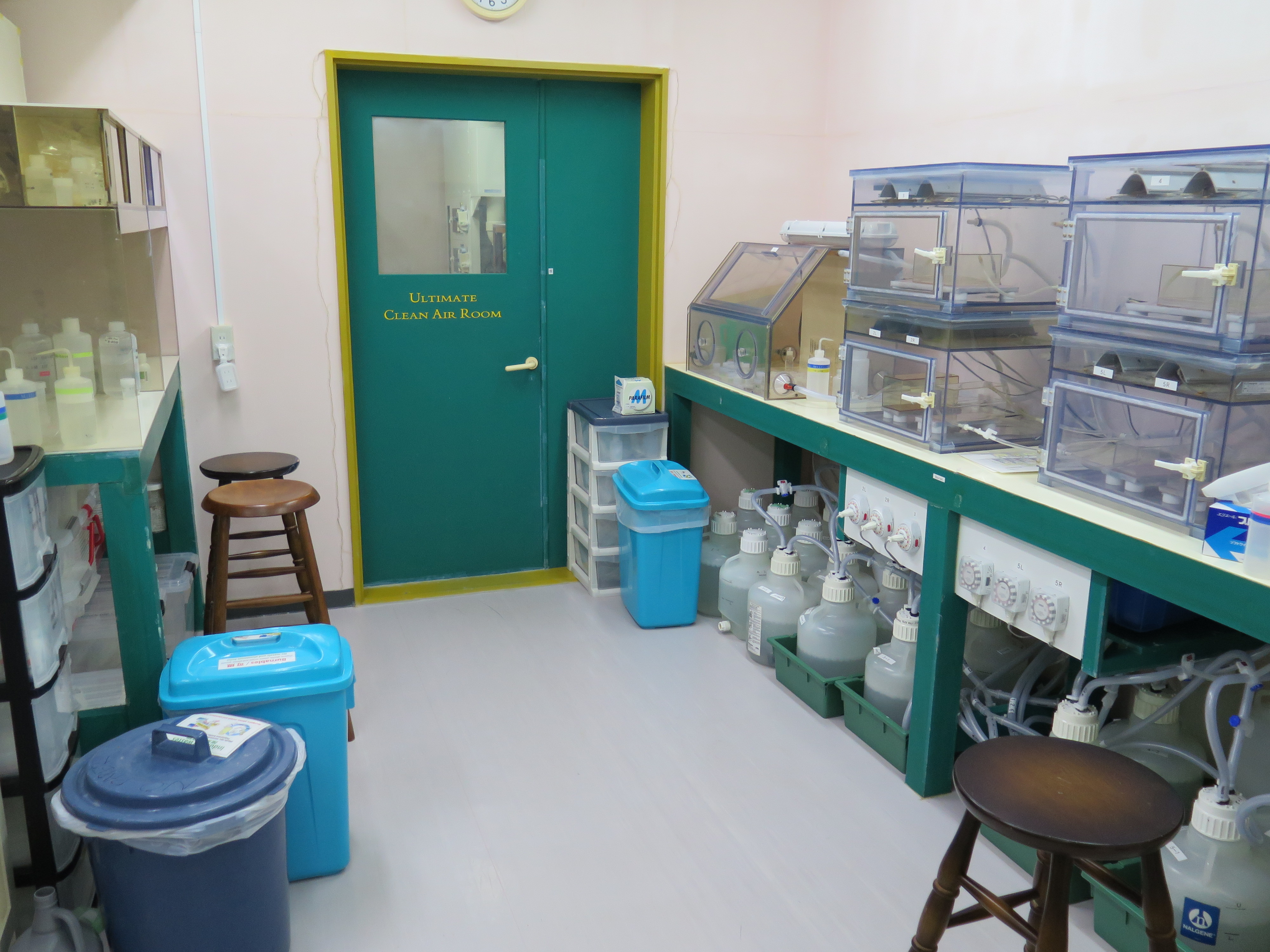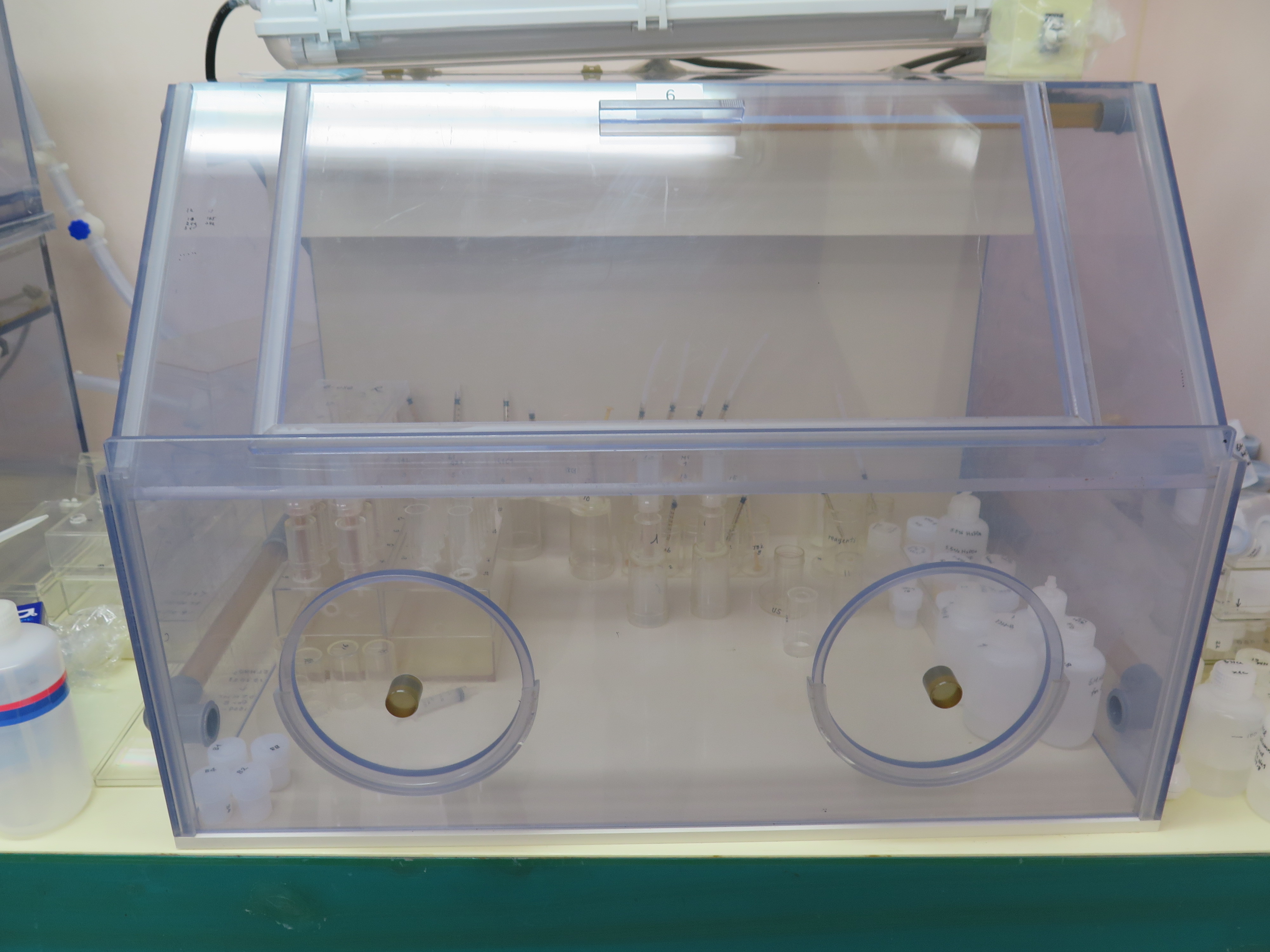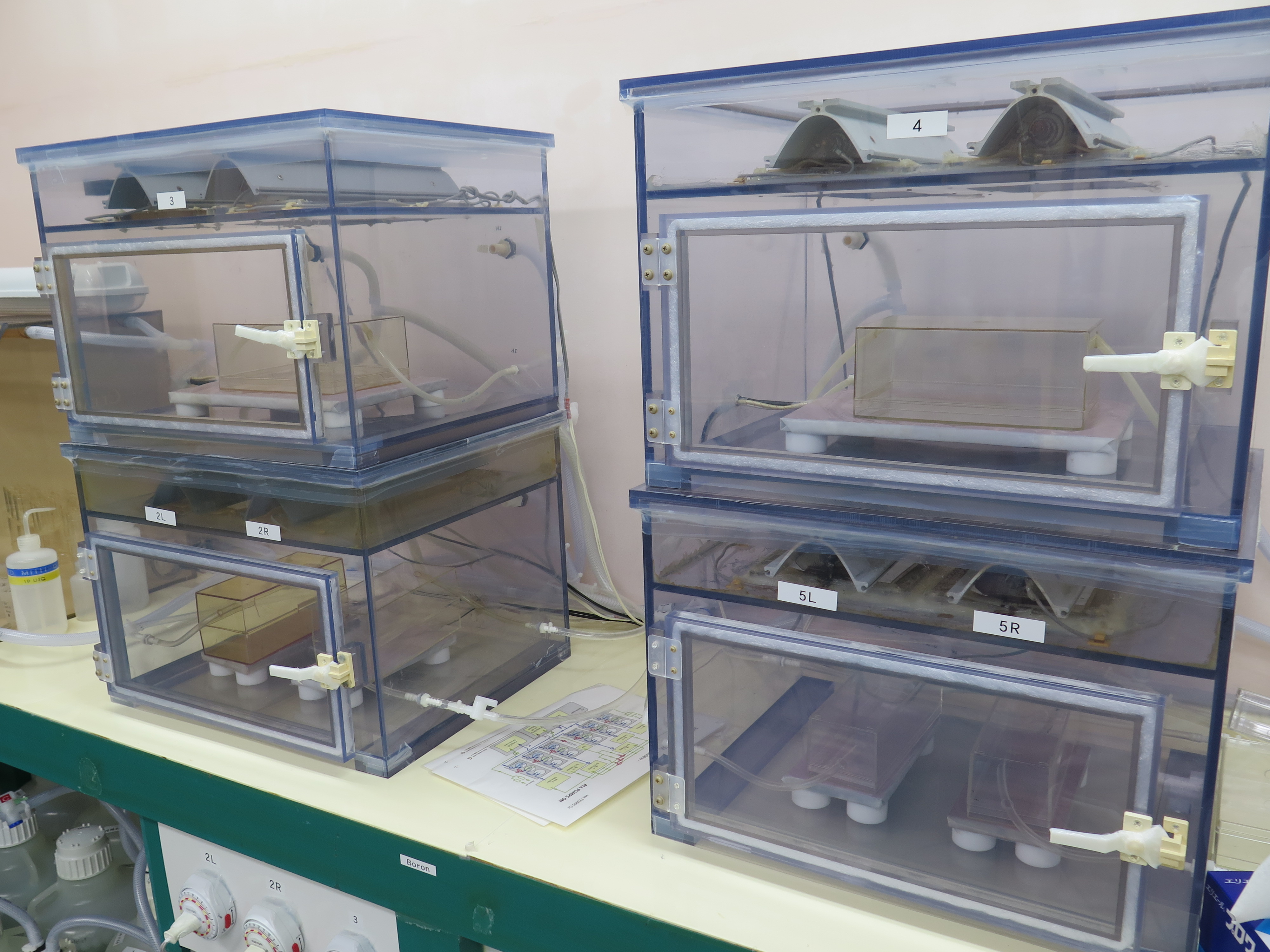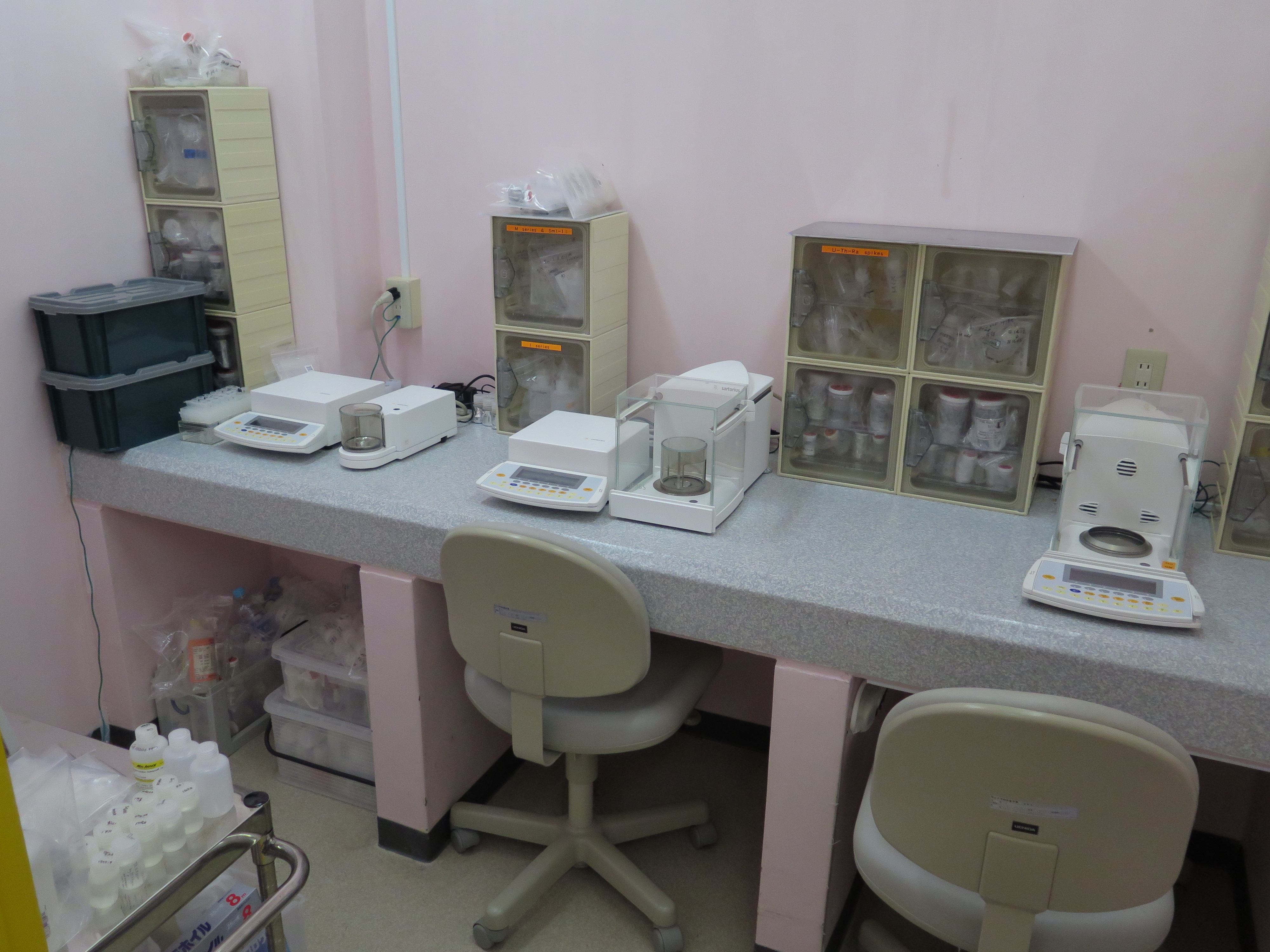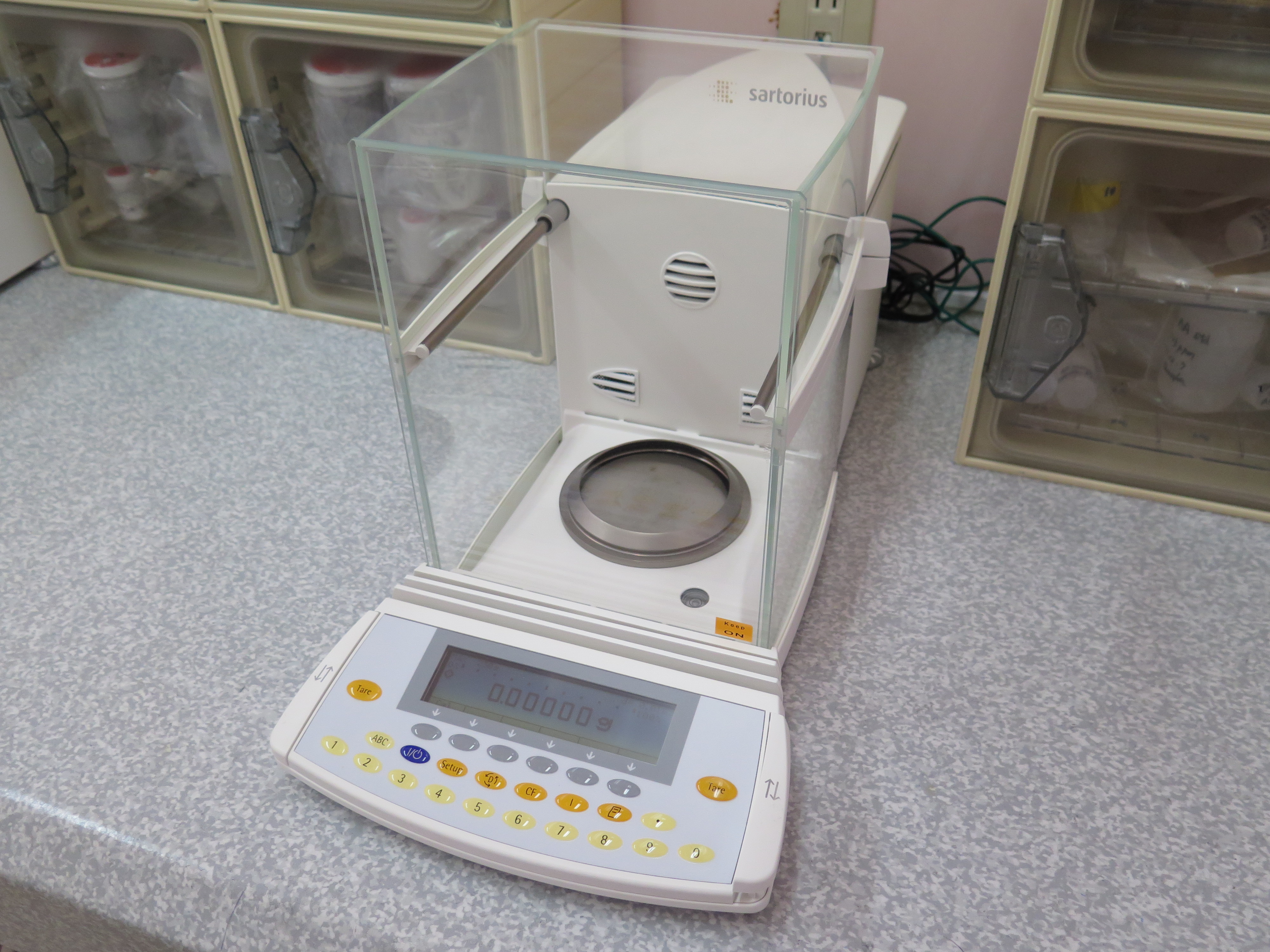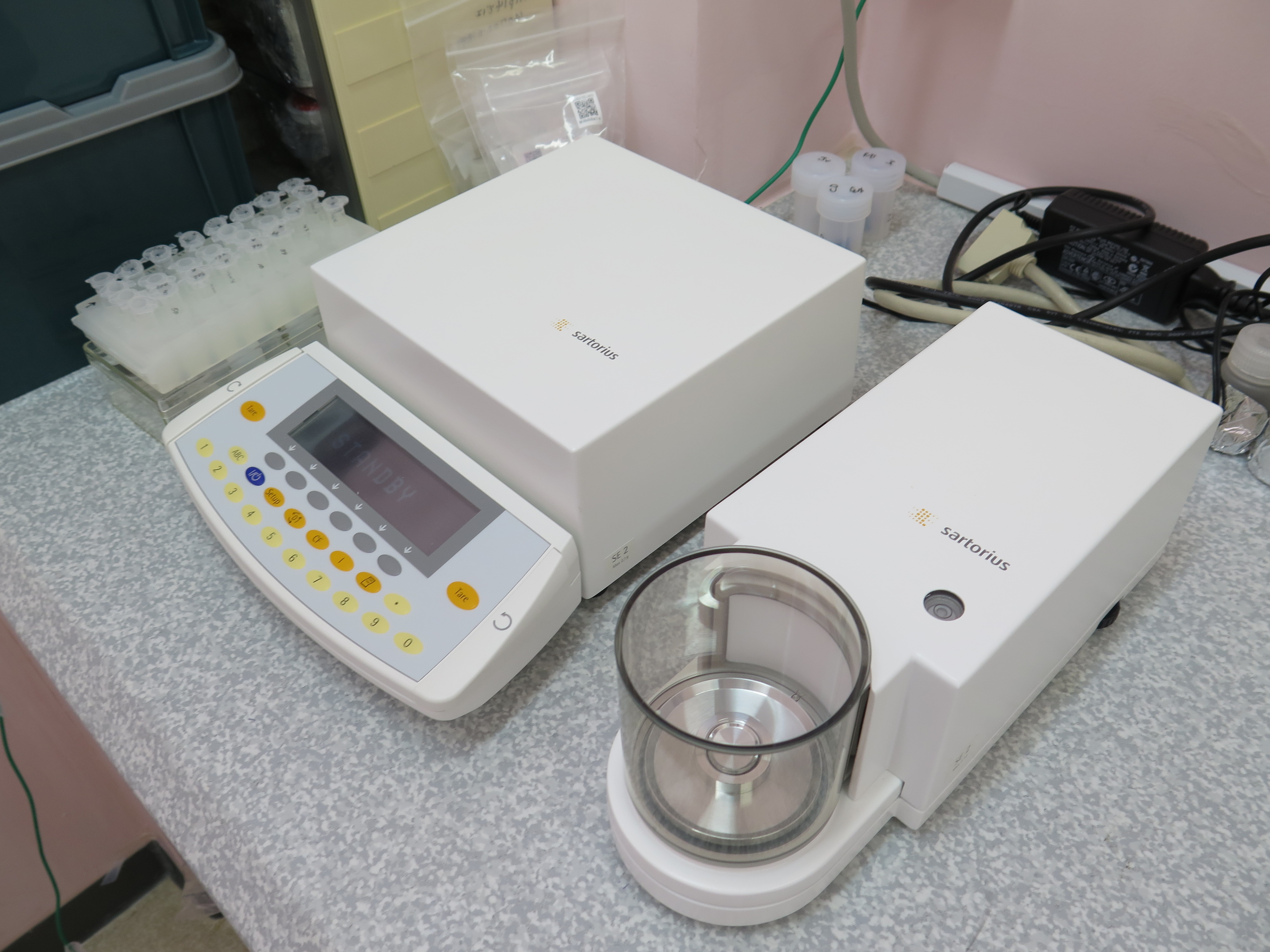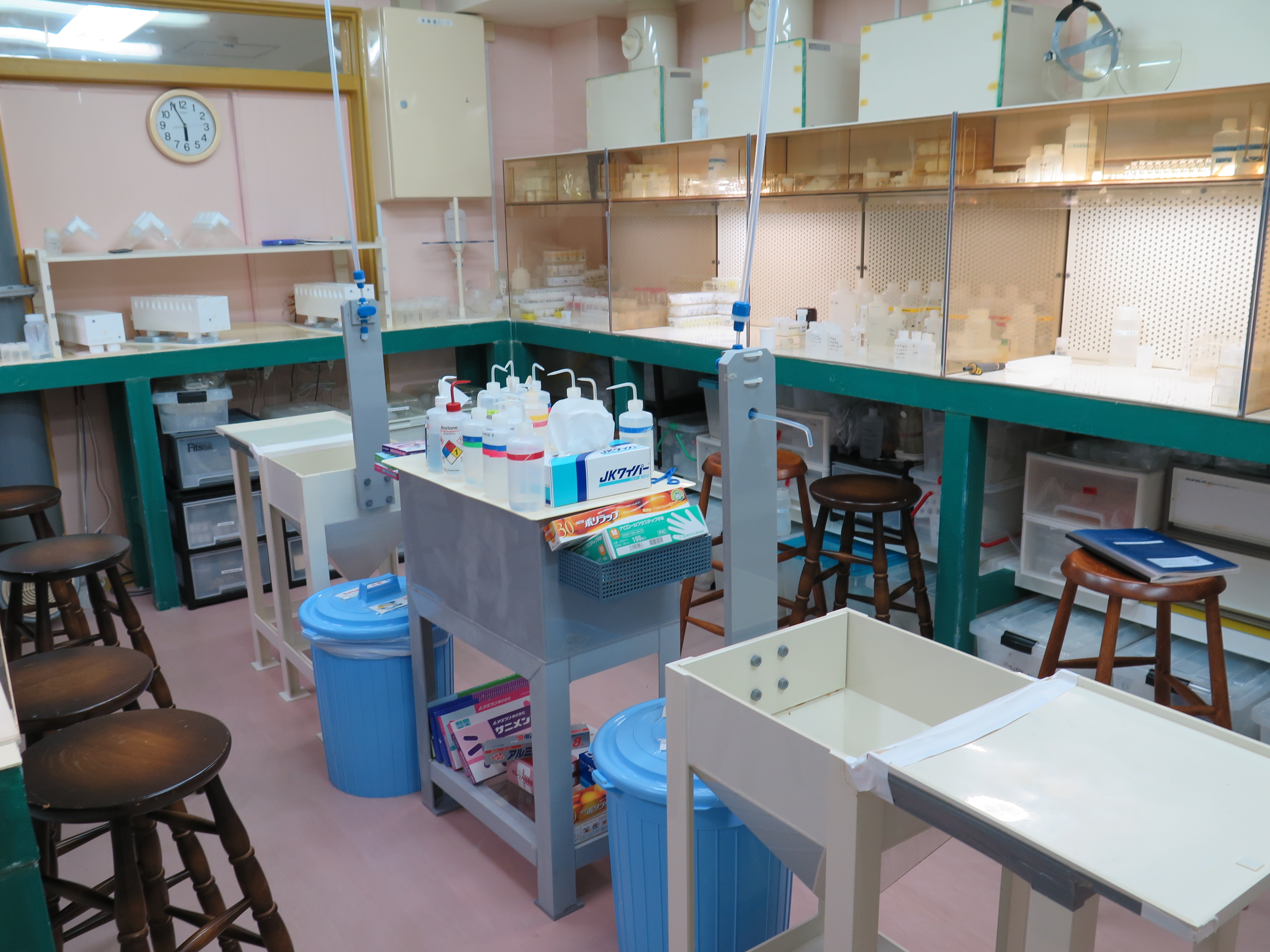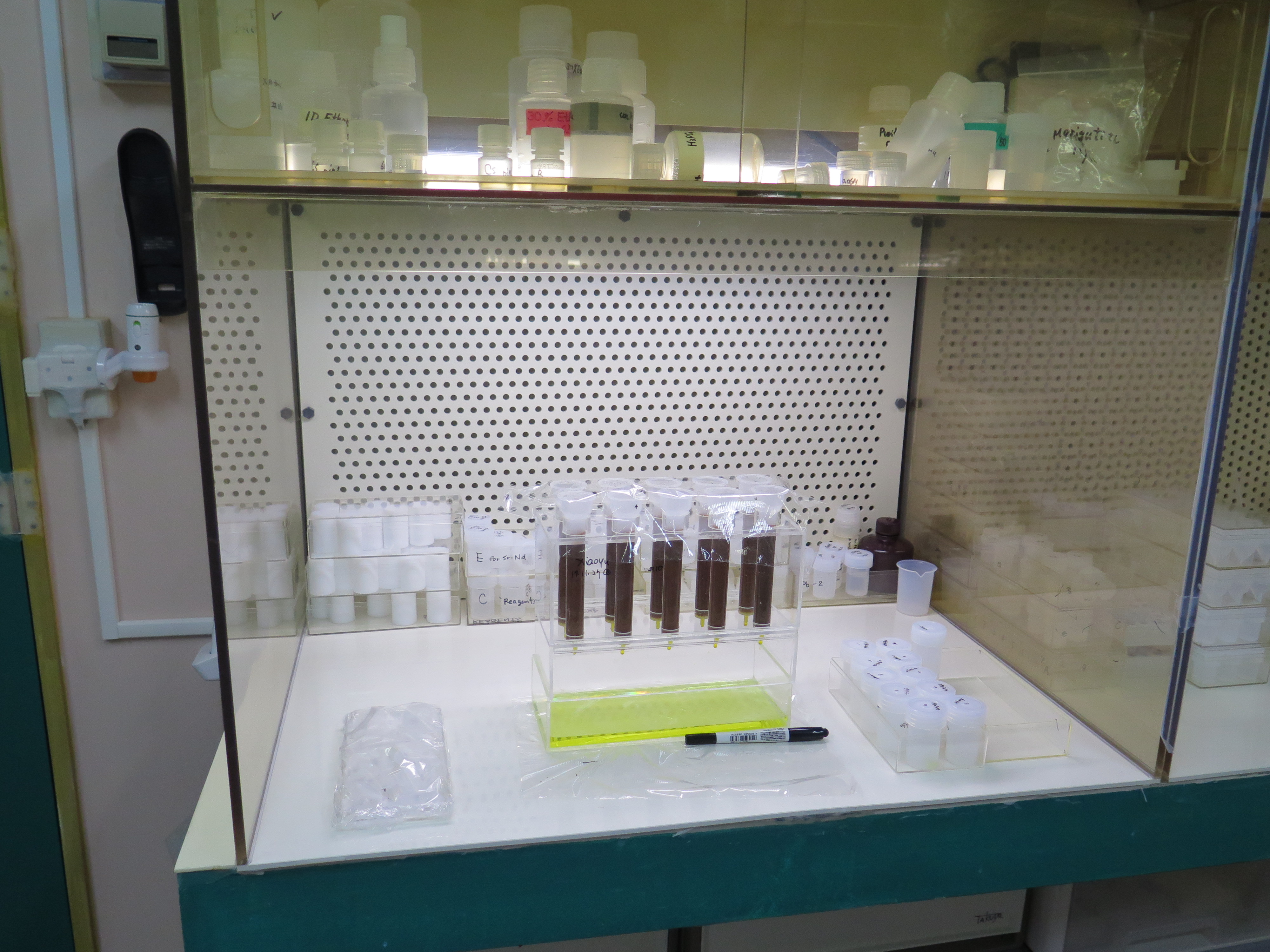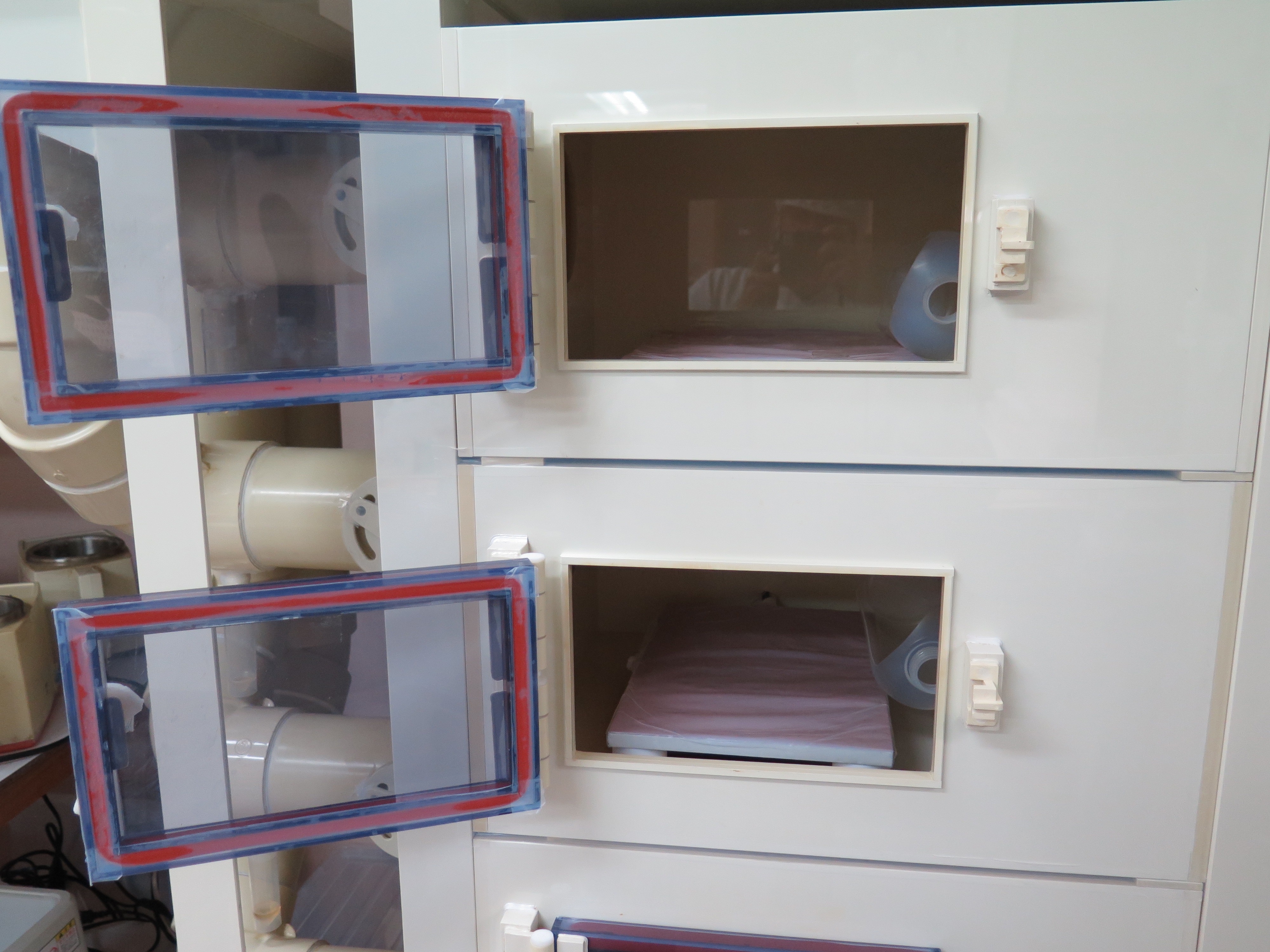Chemistry lab
The chemical processing for inorganic analyses are carried out in this section. The target sample (ex. silicate rocks, minerals, water samples and organic materials, etc.) are processed by sequence in each room; sample weighing, digestion by an acid treatment, separation and/or purification of target elements, etc. By the equipment of an all fresh air system, clean air passed through the HEPA filter is always introduced in each room. The cleanness of the rooms is class of ~1000, and, 10 in the clean benches. Deionized water (Milli-Q) are supplied in each room from the water production equipment (Milli-Q system) installed in the cleanroom corridor. Further, reagents preparation and sample container-washing are also performed in this section.
Chemistry lab includes: Washing room, Reagents room, Boron chemistry room, Weighing room, and Ultimate clean room.
Washing room
The container before or after of chemical analysis are washed in this room. Two pair of Milli-Q water tap supply and sink are available. Clean evaporator which has same system as in the ultimate clean room are installed, and the container is washed by heated in a clean environment. As use for repeating, washing procedure of Teflon containers take 7 steps, corresponds to 7 days.
Technical Utilities
- Clean Evaporator
Analytical Capabilities
- Washing the laboratory materials
Reagents room
Analytical reagents are stored in this room. The water and acids are distilled using 2- bottle distillation system installed in clean bench. Also dilution and titration of the reagents are performed in this room.
Technical Utilities
- 2- bottle distillation system
Analytical Capabilities
- Reagents purification by distillation
Boron chemistry room
Boron chemistry system: This system is especially for Boron concentration and isotope analysis. In order to prevent the blank contamination from the environment and also to prevent isotopic fractionation during sample preparation such as acid decomposition and drying etc., sample operation is performed in this low blank glovebox and evaporators. There are also four clean bench in this room
Loading Bench: The sample after the elemental separation and purification are load onto a "filament" at this clean bench for the isotope analysis by TIMS.
Methods and techniques:- Sample preparation for B isotope analysis:
- Nakamura et al. (1992). Precise boron isotopic analysis of natural rock samples using a boron mannitol complex, Chemical Geology: Isotope Geoscience section, 94(3), 193-204.
- T. Ishikawa and E. Nakamura (1993). Boron isotope systematics of marine-sediments, Earth and Planetary Science Letters, 117(3-4), 567-580.
- Sample preparation for B, HFSE, Ti, Mo, Sn and Sb concentration determination:
- Tanaka et al. (2003). Suppression of Zr, Nb, Hf and Ta coprecipitation in fluoride compounds for determination in Ca-rich materials, Journal of Analytical Atomic Spectrometry, 18(12), 1458-1463.
Boron Chemistry - Spherical Image - RICOH THETA
Technical Utilities
- Boron Chemistry System
- Clean Bench (Misasa-type)
- Centrifugal separator
Analytical Capabilities
- Sample preparation for B isotope analysis
- Sample preparation for B, HFSE, Ti, Mo, Sn and Sb concentration determination
Weighing room
Three of balances are available. Weighing from 1 x 102 g to 1 x 10-6 g is accurately performed. In general concentration analysis, several tens of mg sample are weighed, and the error at this time is less than 1%.
Technical Utilities
- Balance (three)
- Static elimination device
Analytical Capabilities
- Weighing from 1 x 102 g to 1 x 10-6 g
Ultimate clean room
Nine of clean benches (class of 10), two of clean evaporator systems (4 branches in each), ultra-sonication devices, closed-small-evaporation-systems named “MUKADE” are installed. Sample decomposition procedure such as acid addition, heating and drying, etc. are proceeded effectively by these systems and in ultra-clean environment. Ion chromatographic operations (separation and purification of the target element using an ion exchange resin) are also processed in this room. It is available of the sample preparation for more than 54 element concentration analysis, more than 7 isotope analyses.
Methods and techniques:
Ultimate Clean Room - Spherical Image - RICOH THETA
Technical Utilities
- Clean Benches (Misasa-type)
- Clean evaporator systems
- Ultra-sonication devices
- Closed-small-evaporation-systems
Analytical Capabilities
- sample preparation for more than 54 element concentration analysis and more than 7 isotope analyses
